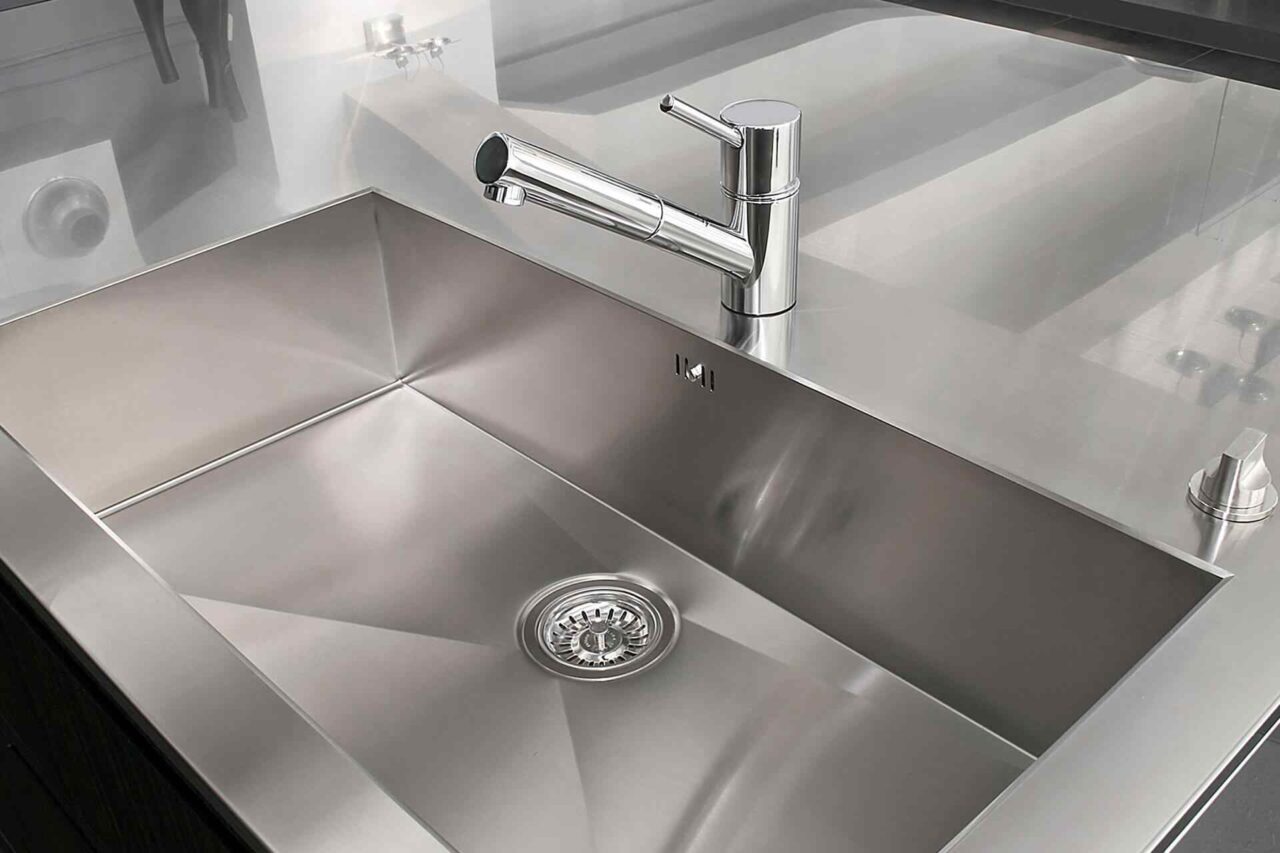
A blocked kitchen sink or bathroom sink can be very inconvenient and unblocking it can be a smelly and unpleasant experience. However, by attempting to do it yourself you can actually save yourself a good amount of money.
Here are some steps to unblock a sink, note the process will be slightly different if you have a plunger to hand but you will need the following:
- A cup-shaped plunger
- A limescale cleaning product
- A sponge
- Duct tape or an old dishcloth
- A large towel
- A cup or beaker
- A bucket
- A kettle
Unblocking a sink with a plunger
- If you have a plunger the first step is to drain the sink of any water that may be already in the sink which isn’t going down – you can use a cup or beaker to do this but you may need a bucket to store this water in whilst emptying the sink if there is a large quantity of water.
- Next you will need to wipe and seal the sink overflow. The overflow is the small hole that is just underneath the taps. Wipe it down using a towel or tissue to remove moisture, then seal it using either duct tape or stuff it with a dishcloth to form a seal.
- For the next steps you will want to place a towel around the foot of the sink basin to catch any water spillages.
- Now you will need to clean the plughole – to do this unscrew the plughole then clean it thoroughly using the sponge and limescale remover. Now might also be a good time to have a look to see if anything can be removed by hand. Once the area is clean, you can replace the plughole and wipe any remaining moisture away. If you think the blockage is removed, try turning on the taps to see if the sink drains properly. If it doesn’t you will need to use the cup to empty the sink again before moving onto the next step.
- If the drain is still blocked then grab the plunger. Place the bottom of it over the plughole and press down firmly in order to create an airtight seal. Next, run the taps for a few seconds until you’ve got a couple of inches of lukewarm water around the plungers’ seal. Now, grip the handle of the plunger and use an up and down pumping motion to create suction. Hopefully the blockage will clear which you will tell from hearing a gurgling sound from the sink. If not, you may need to repeat this a few times.
Unblocking a sink without a plunger
If you don’t have access to a plunger, then there are plenty of common household items which can also be used to unblock the sink. You can also check out our home remedy drain cleaner blog post to find out more.
Bicarbonate of soda (baking powder / baking soda) and vinegar
Pour a couple of teaspoons of bicarbonate of soda down the plughole then follow with a cup of white vinegar. Leave the mixture to work for about five minutes then flush with the hot water.
Washing Powder
Similar, to the previous method, pour two tablespoons of washing powder down the plughole and then follow with some hot water. Another great alternative can be soda crystals.
Natural Drain Cleaner
A natural drain cleaner is particularly effective in clearing organic matter, such as fat, grease or even hair down the drain. Natural drain cleaner as opposed to bleach is kinder to the environment and is also less likely to corrode the pipes.
Water Pressure
If you have an empty bottle lying around (ideally a 2-litre soft-drink bottle) then you can also try this easy trick using water pressure to try to clear the blockage. Simply fill the bottle with warm water and place the open end down the plughole. At the same time squeeze the bottle hard to force the water out of the bottle quickly which should hopefully clear the blockage.
Using a wire or tool to poke/pull out the blockage
For a more manual option, you can use some drain unblocking wire, a curtain wire or even a metal wire coat hanger to create a hook to scrape the blockage out. Feed the tool down the plug hole until you encounter resistance, then apply prodding and hooking motions to dislodge it – be careful however not to push the blockage further down where it could end up out of reach.
Bleach and water
If that doesn’t work, then as a last resort you could try bleach though it is a very corrosive substance. You should make sure you’re fully protected with rubber gloves, then simply pour a cupful of bleach down the sink, followed by some hot water to flush it down.
How to unblock the u-bend
If you have tried all of the above options then it is time to take a look further down your drainage system to find the blockage by cleaning the u-bend. This will mean fiddling with the pipes in your drainage which you may not want to do, in which case you may want to call a professional.
However, it is a relatively simple job and for those who want to try it you will need the following:
- An adjustable wrench
- Rubber gloves
- Antibacterial cleaner
- Sponge
- Bucket
- Towels
- WD-40 or lubricant (possibly)
First of all, you need to prep the area. This job will be messy and smelly so make sure you wear clothes you don’t mind getting wet or dirty. Also make sure you wear rubber gloves.
Next, lay down some towels in the area to soak up any water leakage. You may also want to consider using one as a headrest as you may be under the sink for a while. Finally, place the bucket underneath the u-bend.
Slowly unscrew the threaded caps from each side of the u-bend using the wrench, directing any water rushing out towards the bucket. If the caps are rigid or stiff, a quick spray of WD-40 or other lubricant will help loosen them.
After removing the u-bend, you may want to take it outside where you can flush it clean with water using an outside tap. Also, use the anti-bacterial cleaner and sponge to thoroughly clean the u-bend as bacteria may have been lurking in there for quite a while.
Once it is clean, re-attach the u-bend using your wrench. To check it is fixed correctly, slowly run the cold tap. Hopefully, there will not be any leaks and you can then remove the towels and bucket. If you do notice a leak, try detaching and reattaching the u-bend again and repeat the test with the tap until the water stops leaking.
Common causes of blocked sinks
Once your sink is clear, one of the best things you can do is learn a lesson from it and try to prevent future blockages. Remember that your sink should only drain liquids and not solids and you should resist the temptation to put any of the following down the plughole.
- Tissue (including toilet tissue)
- Cotton wool / buds
- Food
- Cigarettes / ash
- Paper, plastic or cardboard
- Large quantities of fat.
Remember the rule of thumb, if it’s not a liquid it doesn’t belong down your plughole.
If none of these methods fix the problem to unblock your sink then it may be time to call in the professionals as it could be a sign of further damage. Argo Drains have over 25 years’ experience providing emergency drain unblocking and repair, from our base in Lichfield to customers and businesses throughout the West Midlands.
If you would like to speak to us about your blocked sinks and need an emergency plumber, simply call our 24/7 emergency telephone number on 0121 663 6683.
